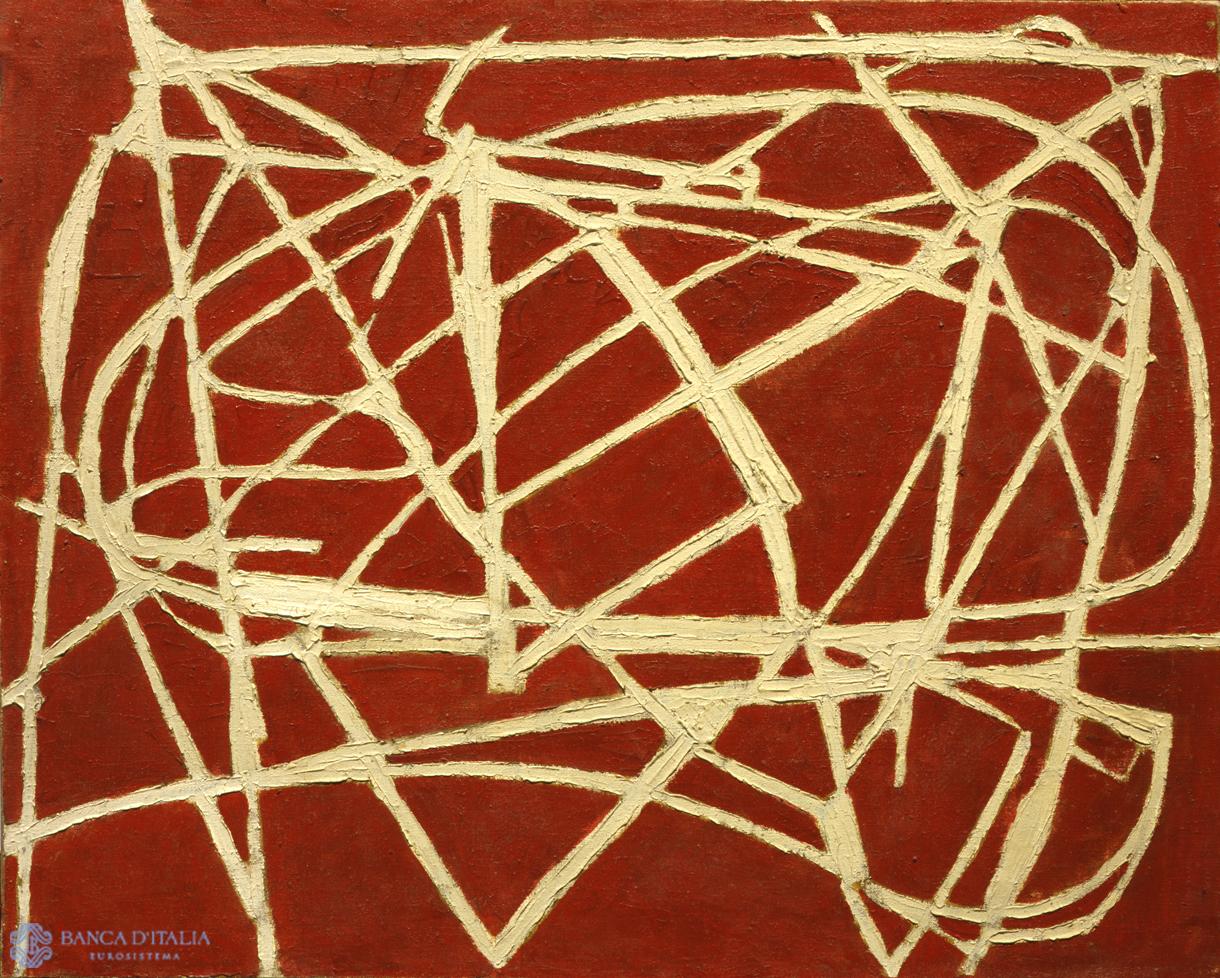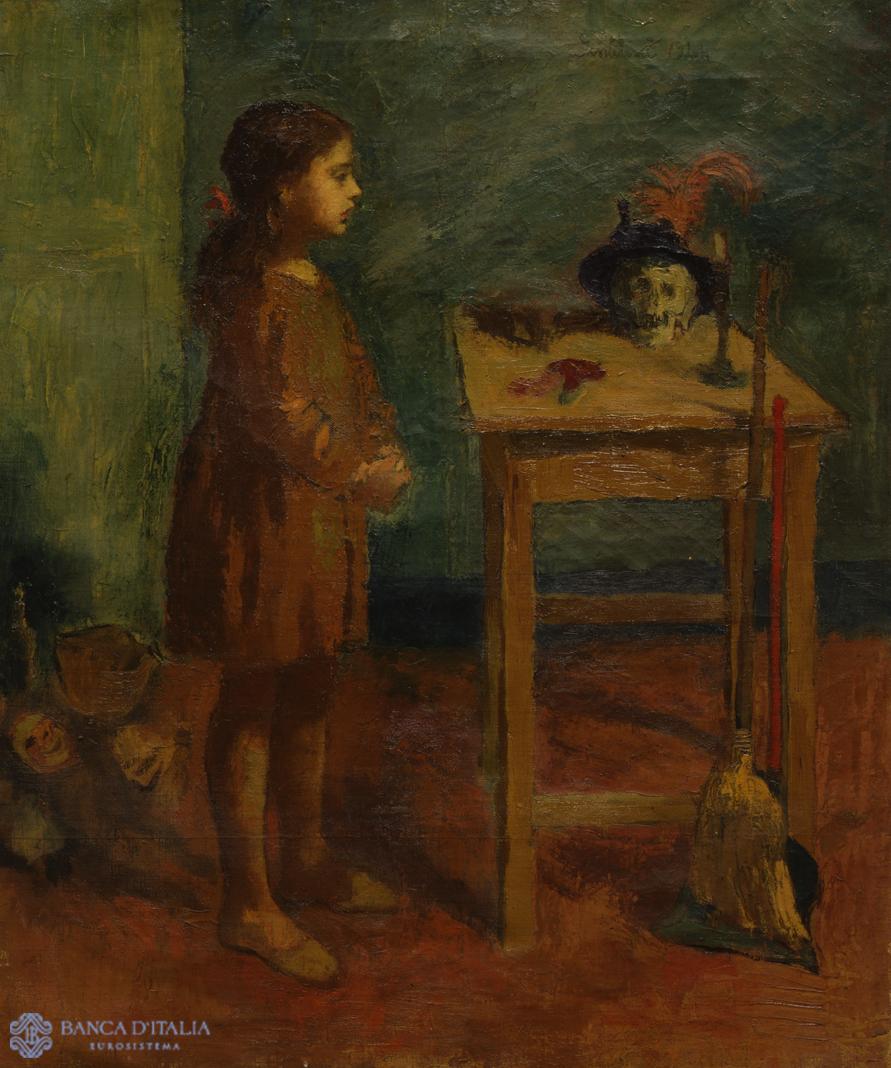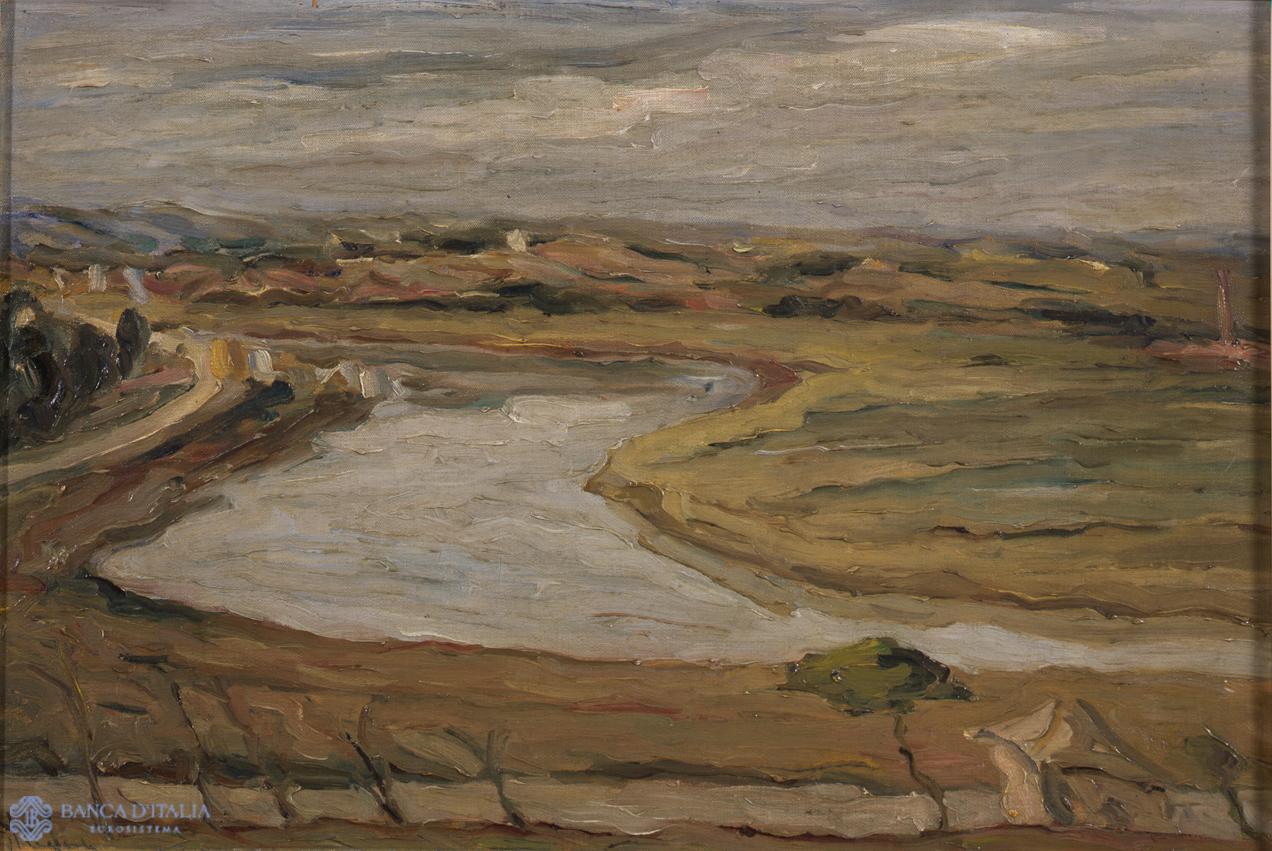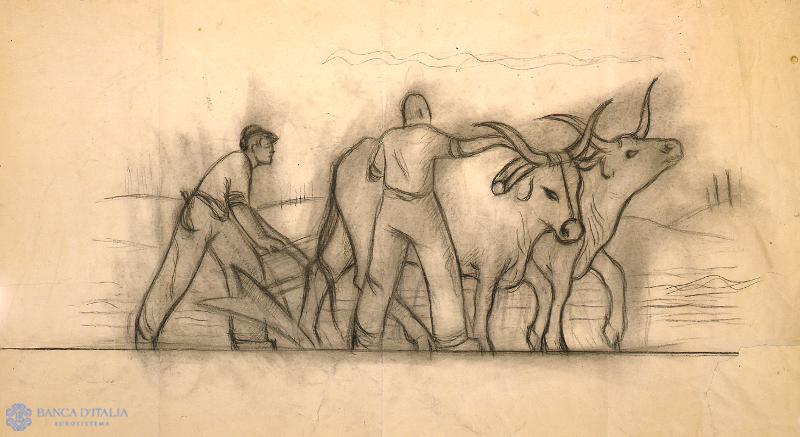In the last part of the artistic period between the two wars there was increasing evidence of movements that not only reject the “autarkical” cultural lines of Novecentism but departs from them ever more radically.
The scope of the cultural references stretches beyond the central line of modern French art and beyond the, albeit original, expressions rooted, as was the case for the Roman School, in local realities and moods. They now include experiences of international abstract art ¿ especially in Milan ¿ of Cubism, above all in the version of Pablo Picasso, and of German expressionism and realism of the 1920s and 1930s.
A decisive role in creating the cultural openings that would powerfully mark the postwar artistic context is played by artists born in the 1910s, who took their quests in every direction. They include Afro, Guttuso and Turcato, who precociously put themselves forward to animate the postwar context with their lively contrasts, together with some of the artists who were already present in the previous period and now contributed new proposals.
In this period Afo reveals an acute sensitivity to colour that is not without echoes of the Venetian tradition, while Guttuso reveals his vocation for a highly dramatic expression; Turcato gives his pictorial image an intense and essential structure, while Burri starts out on his precocious informal solutions.
From Clerici to Tamburi to Gentilini, other proposals variously mould surreal, Cézannesque and expressionist suggestions and indicate how the range of artistic choices broadens in this period.
The last part of this period sees the emergence of the artists born in the early 1920s, some of whom exhibit features that would characterize their mature phases: from Vespignani to Sughi, who revive a form of realism marked by a critical view of society, and to Sadun and Scialoja, who ¿ especially the latter ¿ proceed with a quest for abstract forms loaded with existential tension.
Since, already during the war, “informal” tendencies are present in European art, in the first place the German Wols, who worked in France, it is understandable why not only an artist born in the 1910s, such as Burri, but also some younger Italian artists with different orientations (e.g. Vespignani and Scialoja) precociously reveal aspects of informal art.
Albeit within the limits of a collection that is enlarged with new works and new expressions of the artistic debate whenever opportunities arise, the present tour also offers a diversified view of a promising moment for Italian art. A moment that acquires substance in a period of our history ¿ we are now towards the end of the 1930s and in the first dramatic years of the Second World War ¿ to which the artists respond with a high level of expressive tension.
Alternative aperte verso alcuni degli svolgimenti del secondo Novecento
New Directions in the Second Half of the 20th Century

Works of art

Scena di caccia
This hunting scene is very distinctive: a rider on a black horse is being chased and has almost been reached by three more riders on white horses with dogs following behind. The scene was painted between 1935 and 1936 by a very young Guttuso in the formative stage of his career.
Painting
20th century AD
Figurative

Sala d’attesa
In the bare space of the gloomy waiting room, two people are standing at either side of a seated woman, almost closing her in. The seated woman is emphasized by being lit from behind and by her very light-coloured skirt, which fans out.
Painting
20th century AD
Figurative

Officina
The industrial buildings are presented as pure geometric forms exalted by contrasts between ranges of pure colours - luminous whites, dull blues and dark reds. The theme of two-dimensional representation, which would soon gain ground in his abstract works and which marks this painting with a radical abandonment of any illusion of perspective, is here turned into a clearly evident solution by Turcato.
Painting
20th century AD
Abstract

Natura morta con caffettiera
In this work – which, in its composition of everyday objects, reveals its descent from the modern tradition inaugurated by Cézanne – Afro directs his range of luminous colours towards new effects reminiscent of the great traditions of Venetian painting.
Painting
Still life

Letto disfatto
Painted in 1961, this work shows a disorderly arrangement of light-coloured bed sheets, in stark contrast with a gloomy and inscrutable environment. Here Vespignani summarizes the entire arc of his vicissitudes from the dark years of the War until that moment, before turning in a new direction.
Painting
20th century AD
Abstract

Fondo rosso
On a red base, luminous yellow lines going in all directions intersect and collide in a state of agitation in which there is full expression of a kind of art that shuns a balanced or peaceful composition of its forms.
Painting
20th century AD
Abstract

Coup d'oeil
The artist reworks visions inspired by De Chirico’s Metaphysical art in a profoundly different manner, seen both in the quality of the draughtsmanship and in his choice of palette. Extremely pale, the colours in this work become subtle gradations of shadows cast on the walls of a room whose floor is comprised of alternate bluish and pale grey vertical stripes that stretch away from the viewer.
Painting
20th century AD
Abstract

La Cecchina
The female sitter is presented, from her face down to a wide cleavage, in a rich range of reds that vary with the play of the light, from extremely bright zones to more tender areas in shades of rose.
Painting
20th century AD
Portrait

Bambina davanti al tavolino
In a sketchily depicted interior a girl stands before a small table on which, among other objects, there is a surprising masklike head with a feathered hat. The acidulous contrasts between greens and reds that appear eroded by the light stress the extraneous appearance of the mask in a domestic scene.
Painting
20th century AD
Figurative

Ansa del Tevere
The natural movement of the river, at a point where it curves into the bend that hides it from view, is caught by Stradone as dramatic animation of a landscape whose terrain appears gashed by the water between the two banks.
20th century AD



